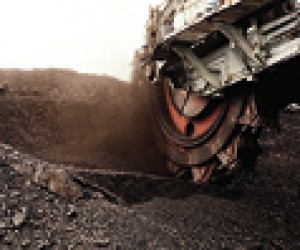The persistent drought in most of South Africa over the last couple of years and especially in the Western Cape province these last two years should serve as a wakeup call to South African industry and government. We live in a water-scarce country, yet many organisations are failing to manage water usage in a way that reflects just how precious this resource is and how important it is to conserve it.
South Africa is one of the 30 driest countries in the world, with an annual rainfall of less than 450mm, well below the world average of around 860mm a year. As we begin to feel more of the effects of climate change, we can expect to endure more extreme weather conditions, including the possibility of more frequent droughts that last longer.
Agriculture accounts for around 60% of South Africa’s water usage and 12% goes to domestic use, according to the Department of Water and Sanitation (DWA). Usage for afforestation makes up 3.7%, power generation accounts for 2.2% and mining and bulk industrial use comprises around 5.7%. Little attention is paid to the industrial sector’s use of water, yet it is an area where we can score relatively quick and easy wins.
A growing operational risk Nonetheless, we are not seeing mining companies pay much attention to water efficiency, for the simple reason that it is not a major operational cost for most of them. Where energy costs may account for up to 30% of a major mining company’s operational expenditure, water might make up less than 2% of its operating costs.
The relatively low cost of water usage for most mining companies, however, belies its importance in production. From cooling production machinery to smelting material to moving minerals, water is crucial to mining. If the water supply to a plant stops, it will not be able to continue production, which will in turn damage its revenues and profits. This is a good reason to embrace water efficiency as a business imperative—another is that the cost of water is likely to rise in the years to come.
The good news is that a strategy for water efficiency can work in lockstep with a mining company’s drive to reduce energy costs and carbon emissions. If you are wasting electrical power on a mine, there is a good chance you are wasting water too (and vice-versa). Imposing discipline on your energy usage will also help to reduce water usage in most cases.
This is about looking at your environment in a holistic way and seeing how your various systems and equipment interact with each other. Ways to use water more efficiently For example, a mine that is using inefficient slurry systems to move material will possibly be pumping more water than it needs to into the system as well as using excessive power.
A small increase in the density of the slurry mixture and a more efficient water pumping system could decrease water requirements by as much as 30%. Similarly, in a process plant running equipment that is 30 years old, it’s not unusual to be using water at a pressure four times higher than necessary to suppress dust—a potential waste of both power and water. Another great example is how poorly optimised the cooling systems are in many mining processes—if you’re using old, inefficient technology, it will be generating more heat than necessary, demanding more water and power to cool it.
Another innovation that South African mining companies could look at is desalination plants to produce fresh water. They can use energy efficient solar sources or recaptured heat from other systems for this purpose. Ensight has worked closely with a number of mining companies on energy efficiency strategies, and when we measure how this impacts on water usage, the results are encouraging.
We helped one customer save around 143,000 MWh in energy a year through a range of strategies—it also reduced carbon dioxide emissions by 142,000 tons and saved nearly 5,700 megalitres of water (that’s enough water for 76,600 hippos’ annual water requirements).
Given the fragile water situation in South Africa, mining companies should embrace water efficiency both as an essential component of their risk management strategy and as a contribution towards ensuring the sustainability of our country.
Using water efficiently can help organisations meet their energy efficiency and carbon emission goals; it is an integral part of running a responsible and sustainable business.
Stephen Austin, Independent Energy Advisor to Ensight Energy Solutions










